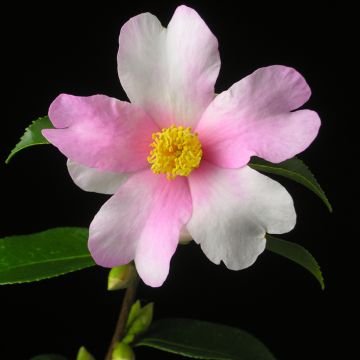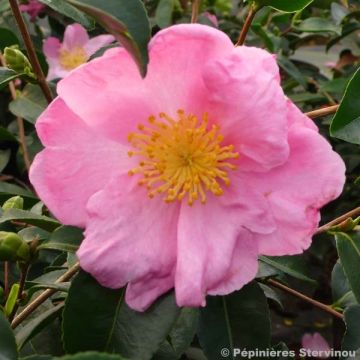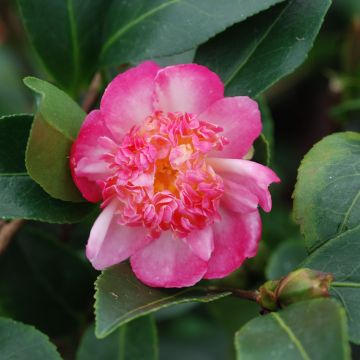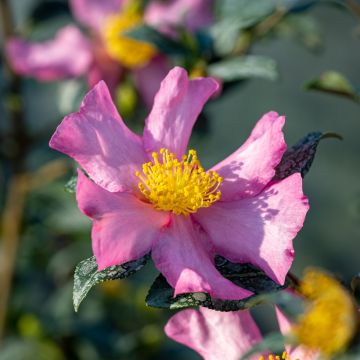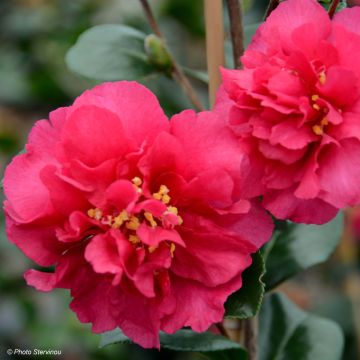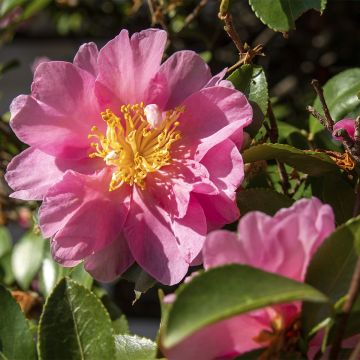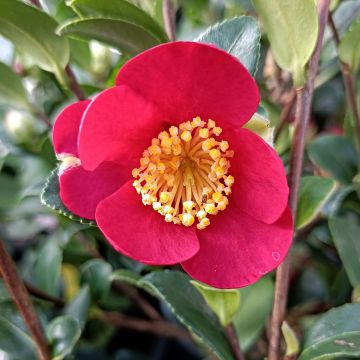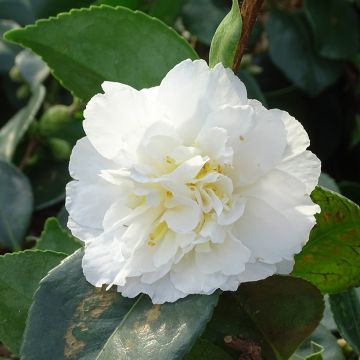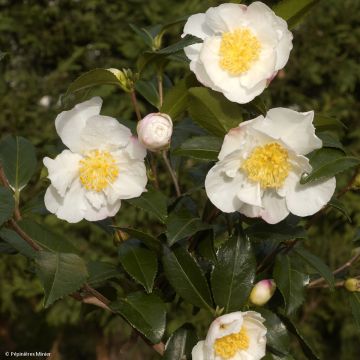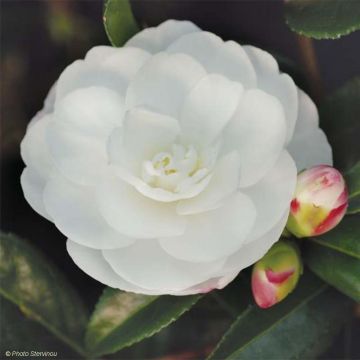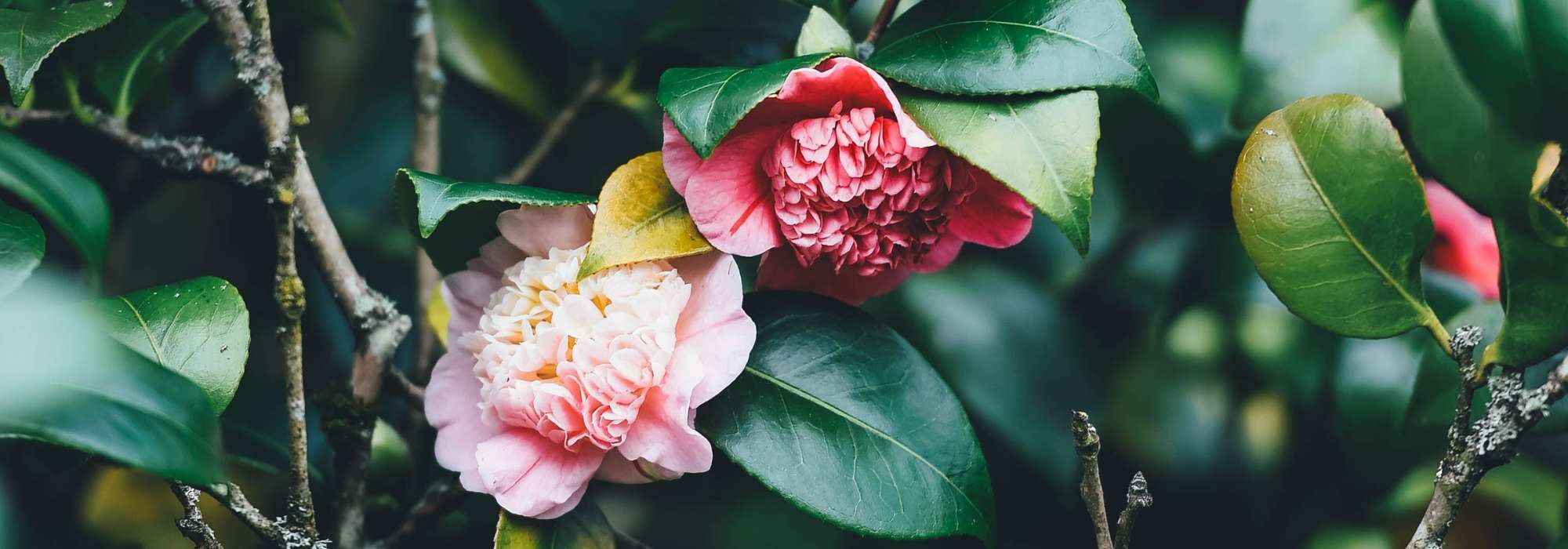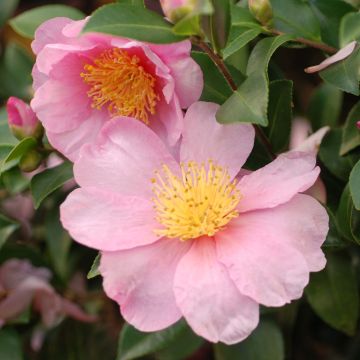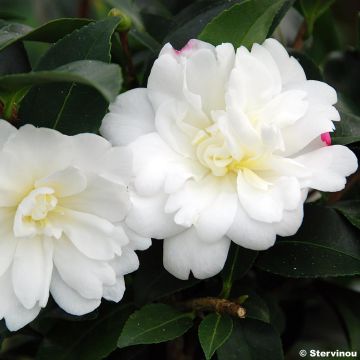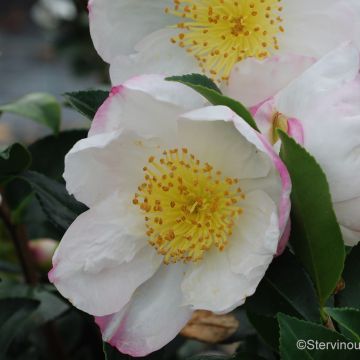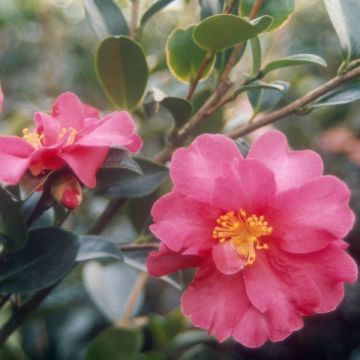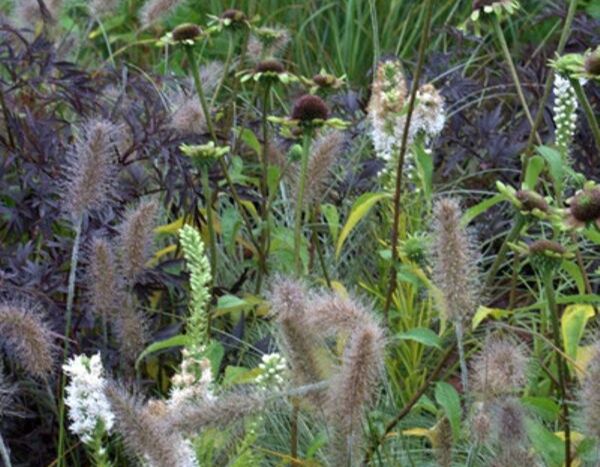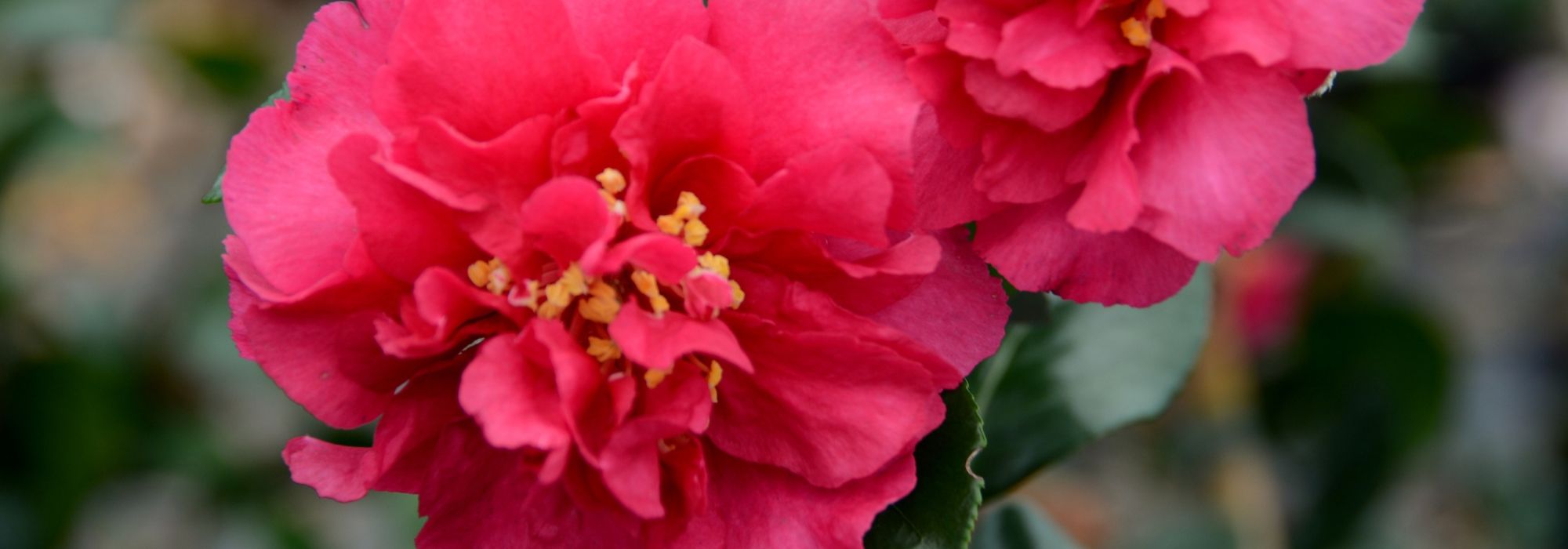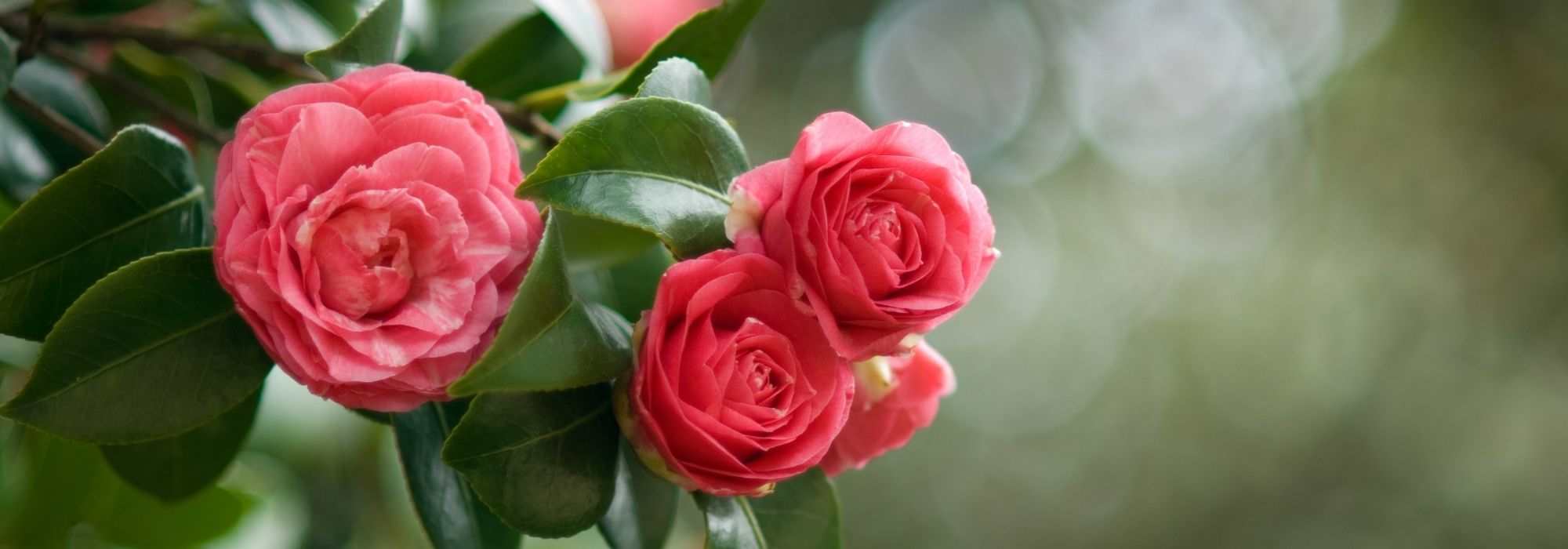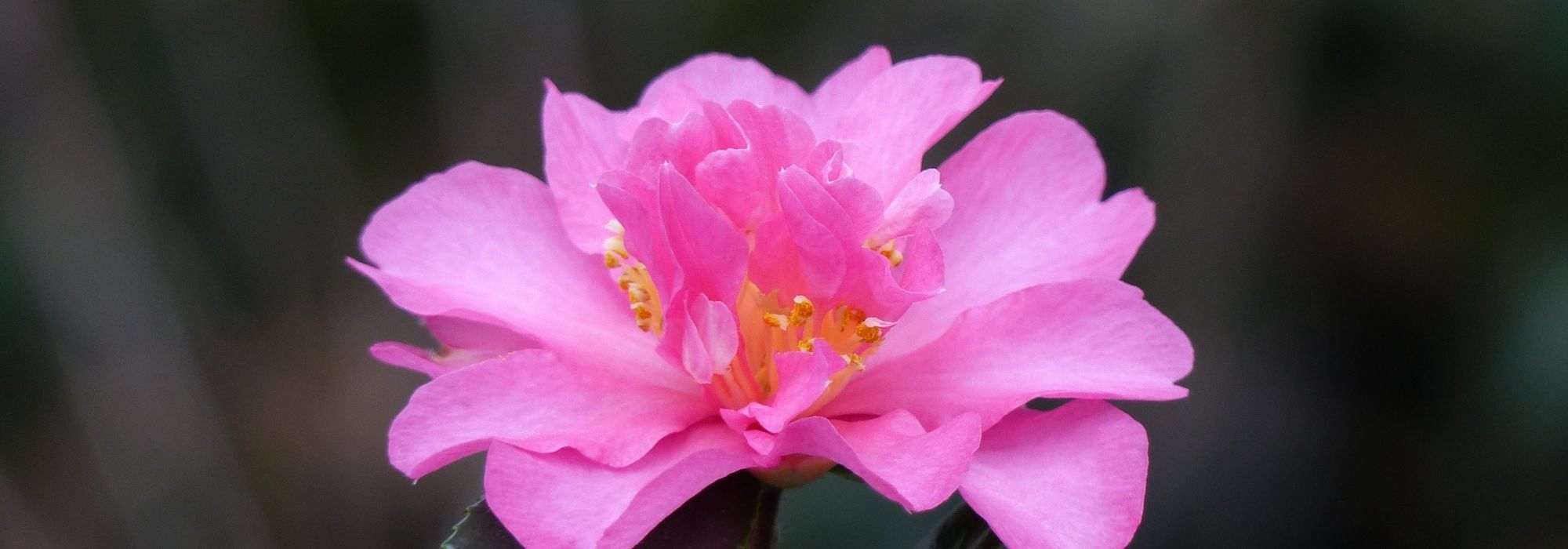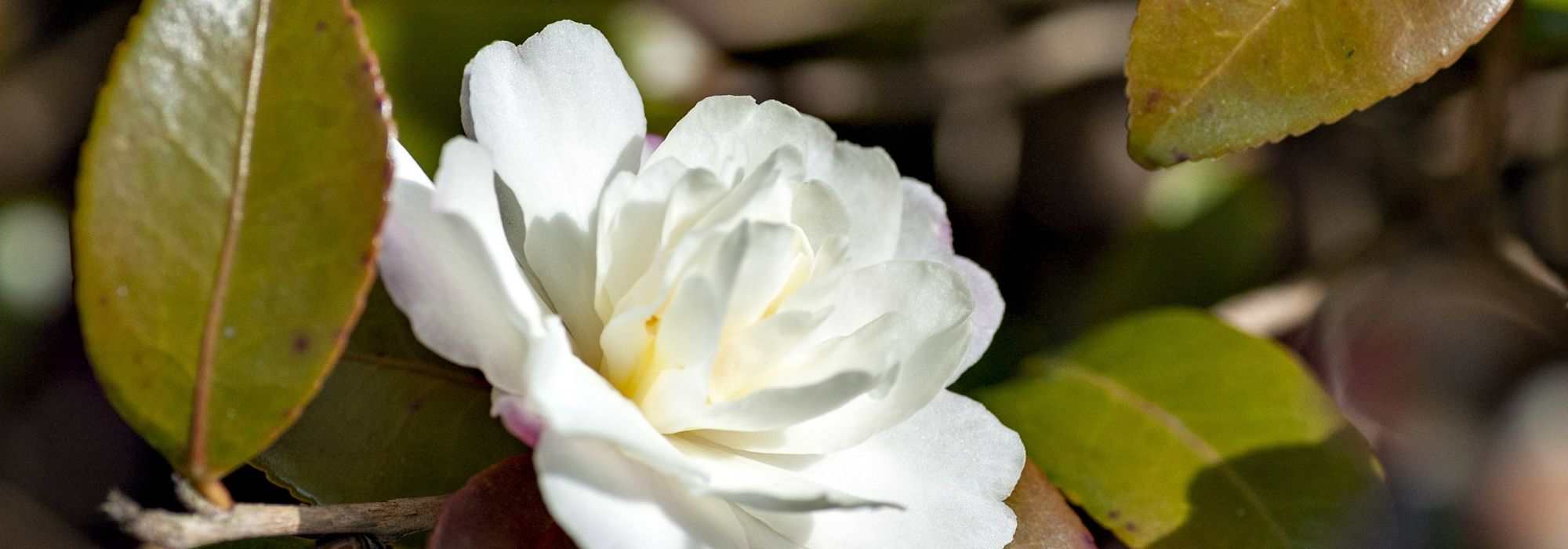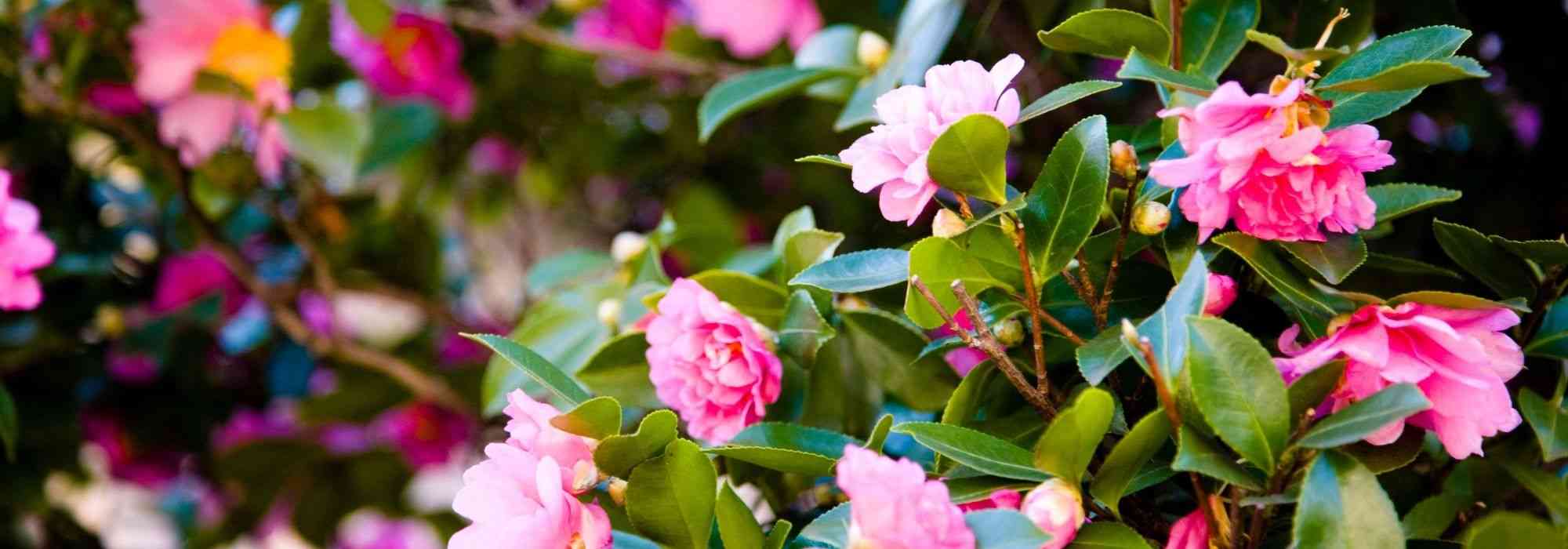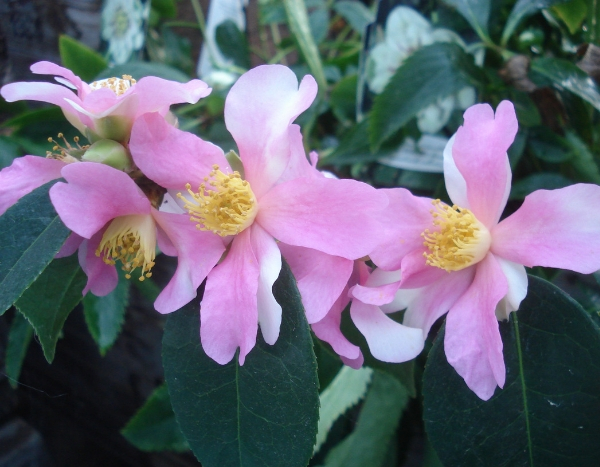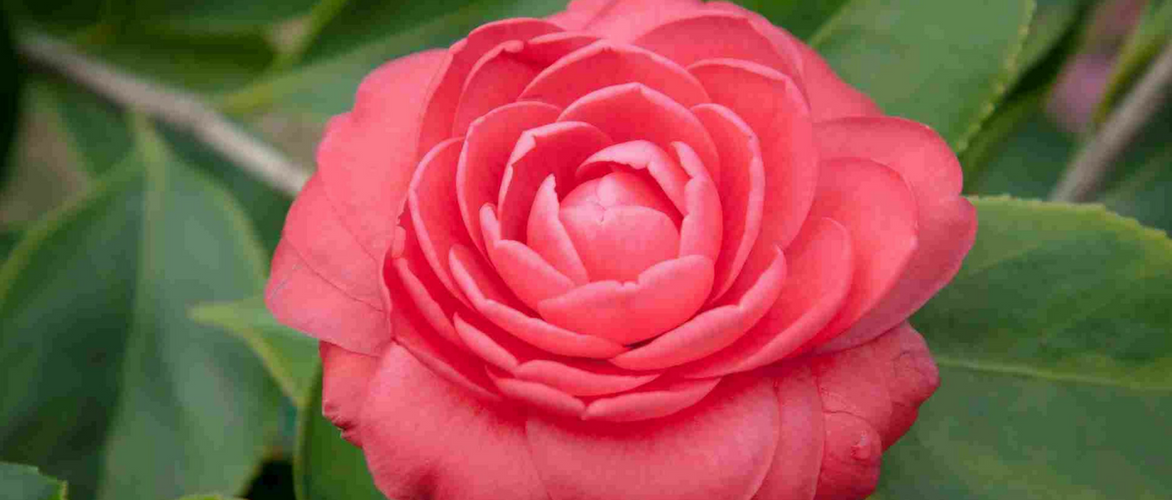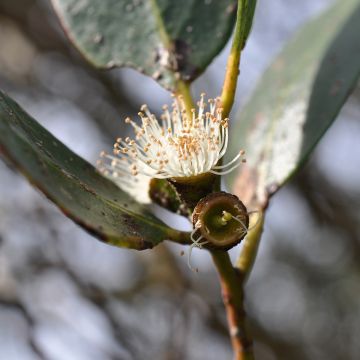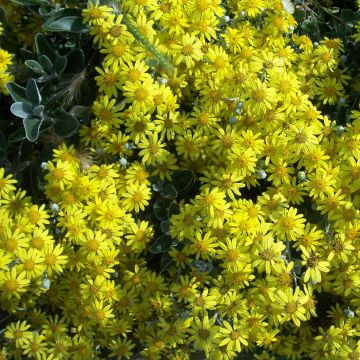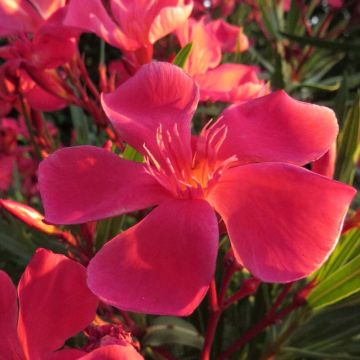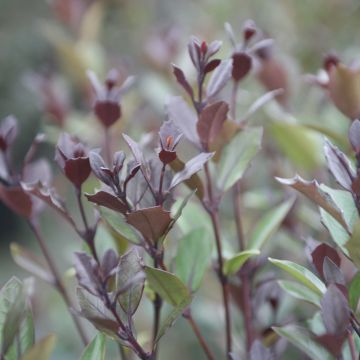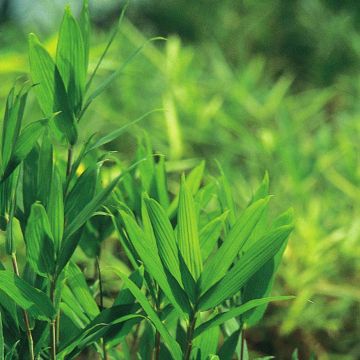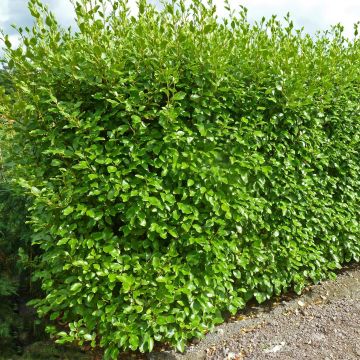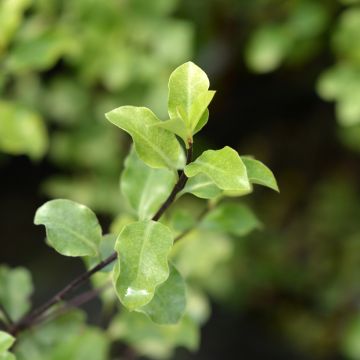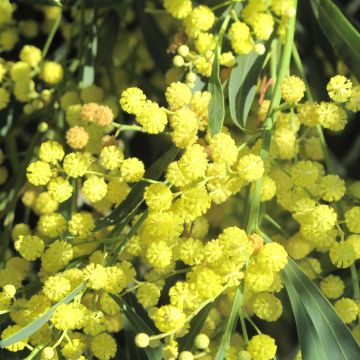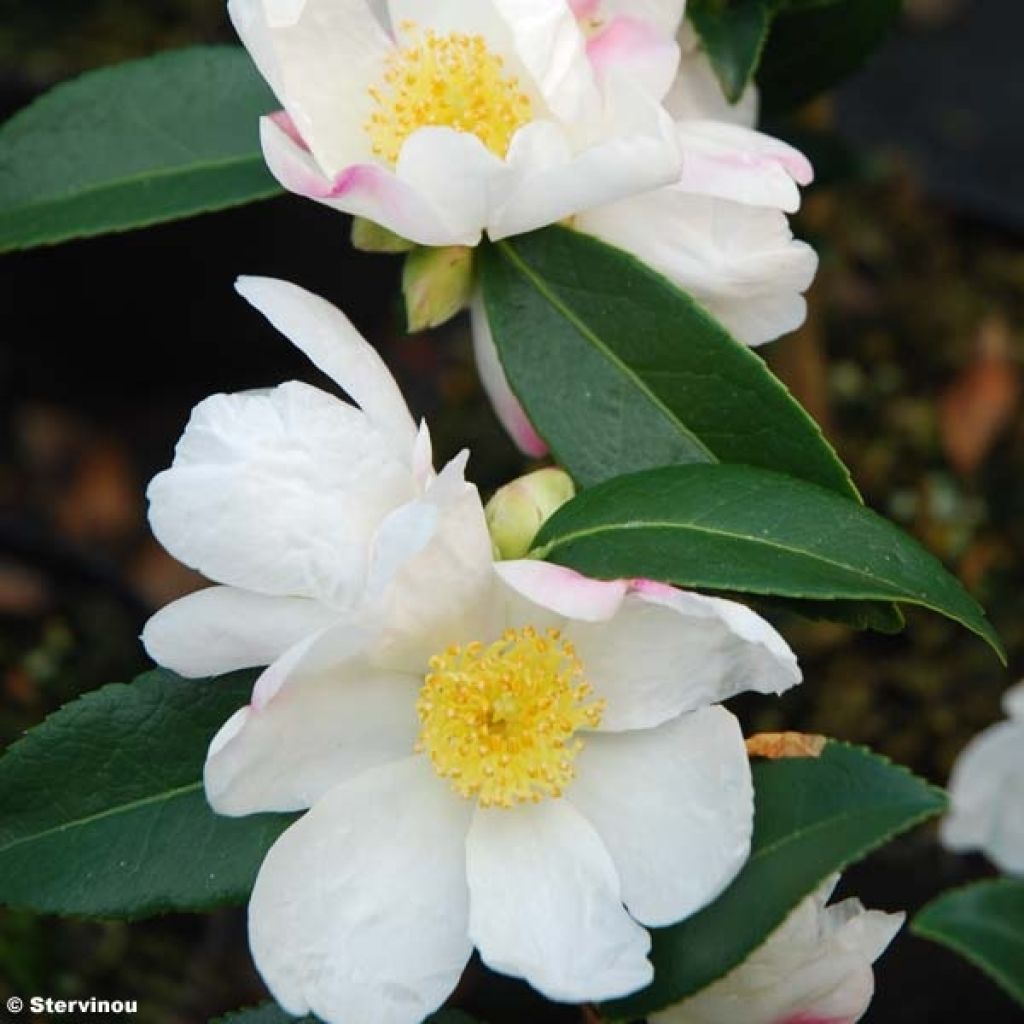

Camellia sasanqua Survivor
View more pictures
Hide images
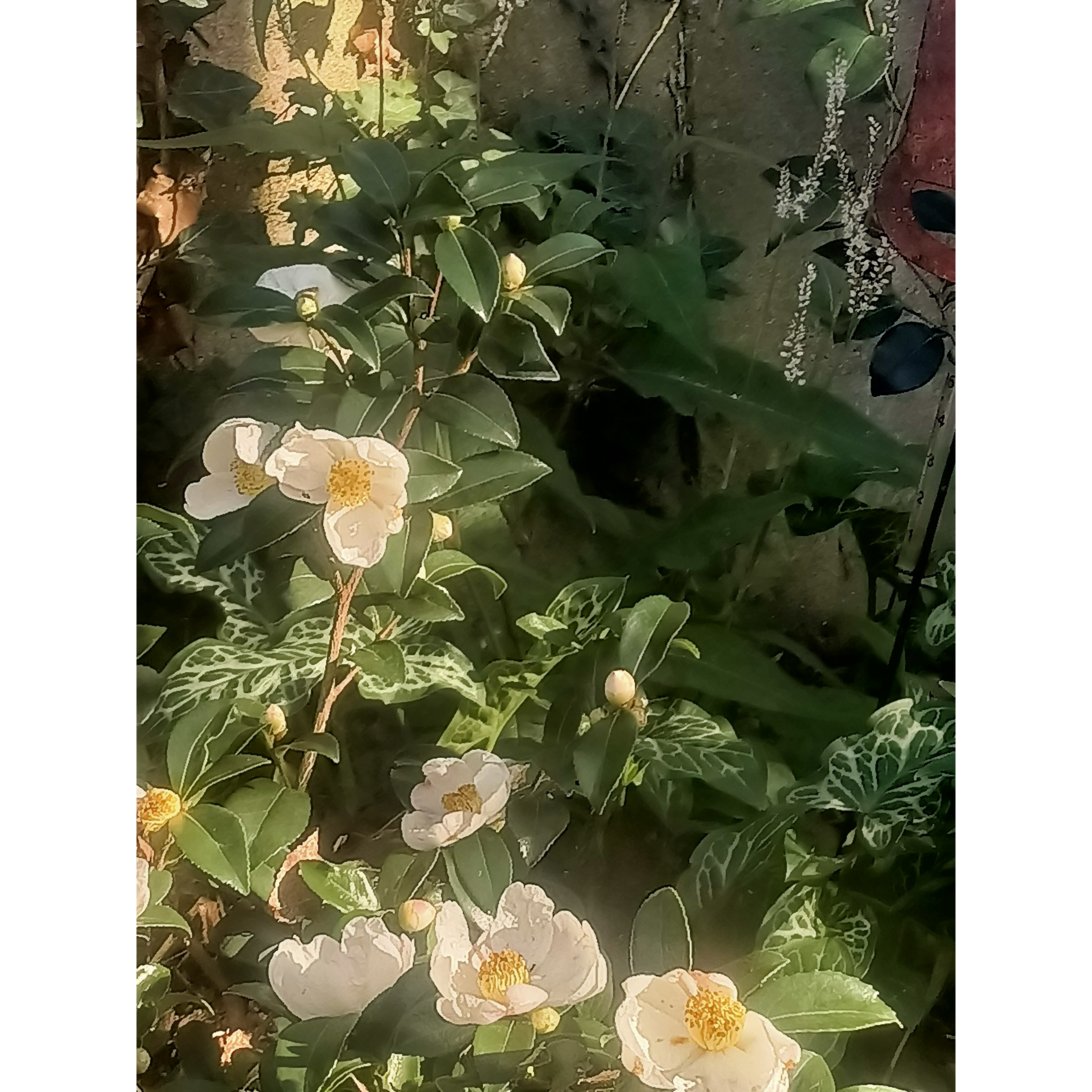
Maryam O.

Survivor 1 year after planting
Maryam O. • 45 FR
Camellia sasanqua Survivor
Camellia sasanqua Survivor
Autumn Camellia, Christmas Camellia
It's been 5 years now since it was planted in the rhododendron and heather hedge, and it's growing very slowly but steadily. Its foliage is quite glossy, very pretty, and it has been flowering for 2 years. Currently, it stands at around 1.40m in height and 80cm in width, its growth is slow, so patience is needed for it to reach the promised 3m by PDF.
Ycel(lesjardins), 21/10/2024
Special offer!
Receive a €20 voucher for any order over €90 (excluding delivery costs, credit notes, and plastic-free options)!
1- Add your favorite plants to your cart.
2- Once you have reached €90, confirm your order (you can even choose the delivery date!).
3- As soon as your order is shipped, you will receive an email containing your voucher code, valid for 3 months (90 days).
Your voucher is unique and can only be used once, for any order with a minimum value of €20, excluding delivery costs.
Can be combined with other current offers, non-divisible and non-refundable.
Why not try an alternative variety in stock?
View all →This plant carries a 24 months recovery warranty
More information
We guarantee the quality of our plants for a full growing cycle, and will replace at our expense any plant that fails to recover under normal climatic and planting conditions.
Would this plant suit my garden?
Set up your Plantfit profile →
Description
Camellia sasanqua Survivor is a graceful shrub with a flexible habit and small evergreen leaves. Unlike the more common Camellia japonica, it flowers in autumn. The flower petals are pinkish-white and open up to reveal a bright yellow stamen centre. The flowers are slightly fragrant.
The bush grows in a compact and upright manner and remains a small bush for a long time, making it perfect for integrating into a hedge, especially since it has evergreen foliage. Of course you can also grow it as a standalone plant to fully enjoy its elegant habit. Grown in a container, it is possible to bring it indoors to a conservatory during autumn to extend and enjoy its flowering period. If this Camellia is called 'Survivor', it's because this variety can withstand extremely harsh winters, being hardy down to -20°C.
Camellias are native to East and South Asia, and they are among the most popular and fascinating ornamental bushes. Many books have been dedicated to them, including one by Abbot Berlèse (1784-1863), a famous and magnificent iconography that faithfully reproduces the most beautiful camellias in his collection.
Camellia sasanqua Survivor in pictures
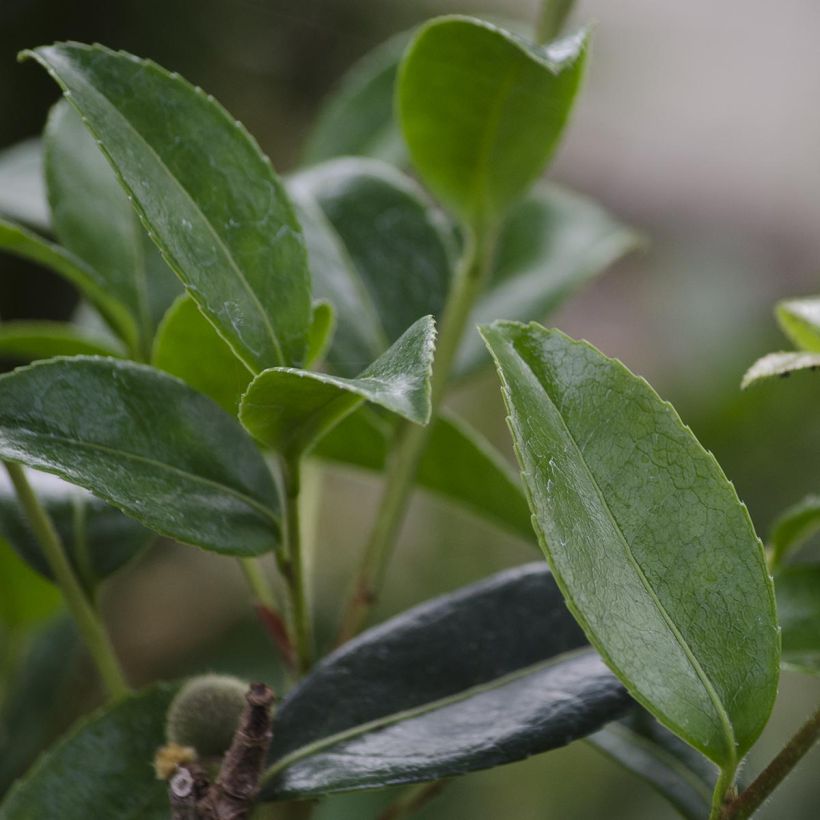

Plant habit
Flowering
Foliage
Botanical data
Camellia
sasanqua
Survivor
Theaceae
Autumn Camellia, Christmas Camellia
Cultivar or hybrid
Other Autumn Camellia
View all →Planting and care
Camellia sasanqua Survivor can be grown in a fairly shady site sheltered from cold and drying winds. It can be cultivated in full sun, but the roots must remain cool. Plant in a fresh, humus-rich, acidic and well-drained soil. Do not plant the bush too deeply; the top of the root ball should be covered with 3 cm (1.2 in) of soil. In winter cover it with a 5 to 7 cm (2 to 3 in) thick mulch composed of leaf compost and crushed bark. Be careful of late frosts that can damage the flowers and buds. Water during dry periods to prevent the bush dropping flower buds. Camellia sasanqua can be susceptible to root rot, leaf spots, and viruses. It can be attacked by aphids and scale insects that cause sooty mould, as well as by vine weevils. Snow can damage the foliage of camellias - lightly shake the bush after snowfall to remove it.
Planting period
Intended location
Care
Planting & care advice
-
, onOrder confirmed
Reply from on Promesse de fleurs
Similar products
Haven't found what you were looking for?
Hardiness is the lowest winter temperature a plant can endure without suffering serious damage or even dying. However, hardiness is affected by location (a sheltered area, such as a patio), protection (winter cover) and soil type (hardiness is improved by well-drained soil).

Photo Sharing Terms & Conditions
In order to encourage gardeners to interact and share their experiences, Promesse de fleurs offers various media enabling content to be uploaded onto its Site - in particular via the ‘Photo sharing’ module.
The User agrees to refrain from:
- Posting any content that is illegal, prejudicial, insulting, racist, inciteful to hatred, revisionist, contrary to public decency, that infringes on privacy or on the privacy rights of third parties, in particular the publicity rights of persons and goods, intellectual property rights, or the right to privacy.
- Submitting content on behalf of a third party;
- Impersonate the identity of a third party and/or publish any personal information about a third party;
In general, the User undertakes to refrain from any unethical behaviour.
All Content (in particular text, comments, files, images, photos, videos, creative works, etc.), which may be subject to property or intellectual property rights, image or other private rights, shall remain the property of the User, subject to the limited rights granted by the terms of the licence granted by Promesse de fleurs as stated below. Users are at liberty to publish or not to publish such Content on the Site, notably via the ‘Photo Sharing’ facility, and accept that this Content shall be made public and freely accessible, notably on the Internet.
Users further acknowledge, undertake to have ,and guarantee that they hold all necessary rights and permissions to publish such material on the Site, in particular with regard to the legislation in force pertaining to any privacy, property, intellectual property, image, or contractual rights, or rights of any other nature. By publishing such Content on the Site, Users acknowledge accepting full liability as publishers of the Content within the meaning of the law, and grant Promesse de fleurs, free of charge, an inclusive, worldwide licence for the said Content for the entire duration of its publication, including all reproduction, representation, up/downloading, displaying, performing, transmission, and storage rights.
Users also grant permission for their name to be linked to the Content and accept that this link may not always be made available.
By engaging in posting material, Users consent to their Content becoming automatically accessible on the Internet, in particular on other sites and/or blogs and/or web pages of the Promesse de fleurs site, including in particular social pages and the Promesse de fleurs catalogue.
Users may secure the removal of entrusted content free of charge by issuing a simple request via our contact form.
The flowering period indicated on our website applies to countries and regions located in USDA zone 8 (France, the United Kingdom, Ireland, the Netherlands, etc.)
It will vary according to where you live:
- In zones 9 to 10 (Italy, Spain, Greece, etc.), flowering will occur about 2 to 4 weeks earlier.
- In zones 6 to 7 (Germany, Poland, Slovenia, and lower mountainous regions), flowering will be delayed by 2 to 3 weeks.
- In zone 5 (Central Europe, Scandinavia), blooming will be delayed by 3 to 5 weeks.
In temperate climates, pruning of spring-flowering shrubs (forsythia, spireas, etc.) should be done just after flowering.
Pruning of summer-flowering shrubs (Indian Lilac, Perovskia, etc.) can be done in winter or spring.
In cold regions as well as with frost-sensitive plants, avoid pruning too early when severe frosts may still occur.
The planting period indicated on our website applies to countries and regions located in USDA zone 8 (France, United Kingdom, Ireland, Netherlands).
It will vary according to where you live:
- In Mediterranean zones (Marseille, Madrid, Milan, etc.), autumn and winter are the best planting periods.
- In continental zones (Strasbourg, Munich, Vienna, etc.), delay planting by 2 to 3 weeks in spring and bring it forward by 2 to 4 weeks in autumn.
- In mountainous regions (the Alps, Pyrenees, Carpathians, etc.), it is best to plant in late spring (May-June) or late summer (August-September).
The harvesting period indicated on our website applies to countries and regions in USDA zone 8 (France, England, Ireland, the Netherlands).
In colder areas (Scandinavia, Poland, Austria...) fruit and vegetable harvests are likely to be delayed by 3-4 weeks.
In warmer areas (Italy, Spain, Greece, etc.), harvesting will probably take place earlier, depending on weather conditions.
The sowing periods indicated on our website apply to countries and regions within USDA Zone 8 (France, UK, Ireland, Netherlands).
In colder areas (Scandinavia, Poland, Austria...), delay any outdoor sowing by 3-4 weeks, or sow under glass.
In warmer climes (Italy, Spain, Greece, etc.), bring outdoor sowing forward by a few weeks.






























